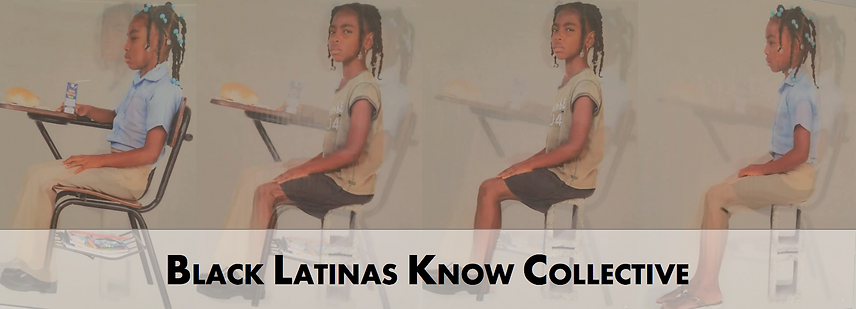On Dis(obedience) and Reforming the Black Latina Body
- BLKC

- Jan 15, 2020
- 2 min read
Updated: Feb 10, 2020

It used to make me proud. And when it started, I believed it. That I was special. That I had “grit” and resilience. That I had “earned” my way up the “success” ladder. It wasn’t until years later that I saw the evidence, the violence. The ways in which they shoved respectability down my throat until it filled me. These institutions that shall remain nameless—not to protect them, but because they’re all guilty of the same thing— made of me an assimilable body.
The reform of Black girls’ bodies has a long history in the United States. Black girls, who have been framed as too dangerous, sexual, and disobedient, have faced the brunt violence of a society that only values them in pieces. The consequences of not assimilating and contorting oneself to these expectations are dire. In schools, Black girls are six times as likely to be suspended as white girls, more likely to be arrested and referred to law enforcement, and more likely to receive harsher punishment. Overall, society also tends to view Black girls as older and less in need of protection. In other words, they should “know better.”
Of course, no system of domination can exist without making space for a few to “make it.” Enter teachers, afterschool programs, and non-profits that, perhaps in collusion with this system or maybe with good intentions, attempt to teach Black girls how to navigate these structures. I have been the recipient of these good intentions/collusion since I arrived in the United States at age 9; the daughter of working-class Dominican immigrants. I remember the relentless in-between class lessons trying to make me get rid of my Spanish accent. I remember the workshops on how to talk to professors in ways that masked my class status. Most painfully, I remember the requests to share my deepest tragedies with funders so that they (and I really emphasize the plural here) could parade my “resilient” Black girl body.

Being the girl who survived also means navigating wealthy white spaces where the daily indignities slowly chip away at your core. The forced smiles in the face of racist comments. The assumptions about my family or where I grew up. The praise of success despite hardship. A veces hay que tragar. But when I think about the parts of me that I was forced to let go off in order to become palatable to these institutions, I mourn the free Black girl that I could have been.
What I’m asking here is what are the costs of assimilation and obedience on free Black girls? And what can we build to get rid of the false choice between not making it and making it as someone else, as a sort of watered-down version of who we are?
I look at young Black and Latina girls today and I smile at their refusal to be sites of reform. At the ones who refuse to give thanks to institutions for letting them in. At the ones insisting on radical and unprecedented investment in them.
What are the costs of success?
Sometimes, I fantasize about taking all my awards and setting them on fire (word to Beyoncé).
Jomaira Salas Pujols






Comments